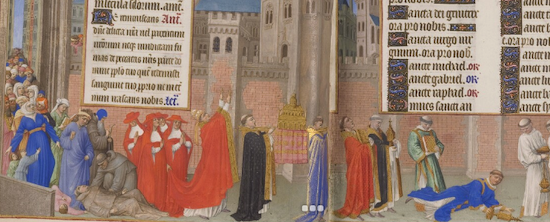The feast of St. Gregory
September 3, 2020 |
Today’s feast of Saint Gregory the Great (c. 540-604 AD) brings that monk and pope to my mind—less for his remarkable life than for the disorienting, uncertain, and tumultuous times in which he found himself living.I first encountered his story years ago, as a new graduate student living in another country. Reading of Gregory’s experience, I tried to imagine living within the crumbling remnants of the Roman empire.
Sacked yet again in 546, Gregory’s Rome was home to perhaps a tenth of its peak population. Famines followed the wars that brought besieging armies to its gates, just behind waves of desperate refugees. Even the theological controversies drew blood in those days.
Then in 589 the Tiber flooded, ruining churches and the city’s winter granaries, not long before the bubonic plague returned to Rome—killing the pope whom Gregory succeeded.
With hindsight, many historians mark this as the end of three centuries of transition. Late Antiquity, we call it.
To Gregory, it seemed that the world itself had grown old, even unto death.
For good reason, I’ve always thought. I would have drawn the same conclusion.
Over the years, I’ve periodically taken consolation in contemplating all that emerged from this seeming collapse of civilization, all that survived that impossible-to-comprehend confluence of suffering. There is, for example, the culture of the Middle Ages that has been my own long study.
The past months have schooled my imagination, to be sure. And still Gregory’s experiences exceed what I can comprehend.
Today my thoughts turn not to suffering, but to the resilience of Gregory’s contemporaries: the gritty procession that prayed its way around Rome in defiance of the plague—looking more like an unkempt mob, I imagine, than the colorful pageant imagined eight centuries later.
How should we respond to our own plagues? Prayer, to be sure, is timeless. In place of processions, though, let me suggest next week’s Black Lives Matter Teach-In (see below).
And by continuing to wear our masks, of course.
